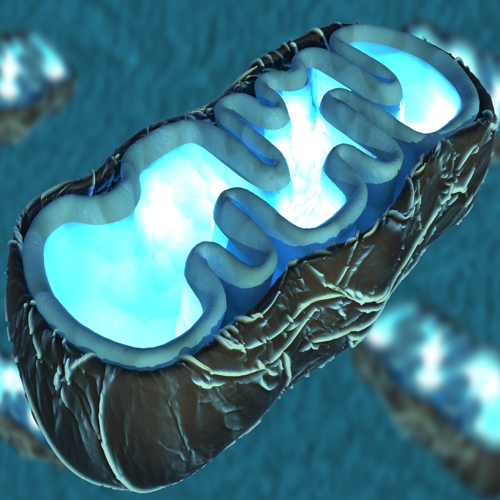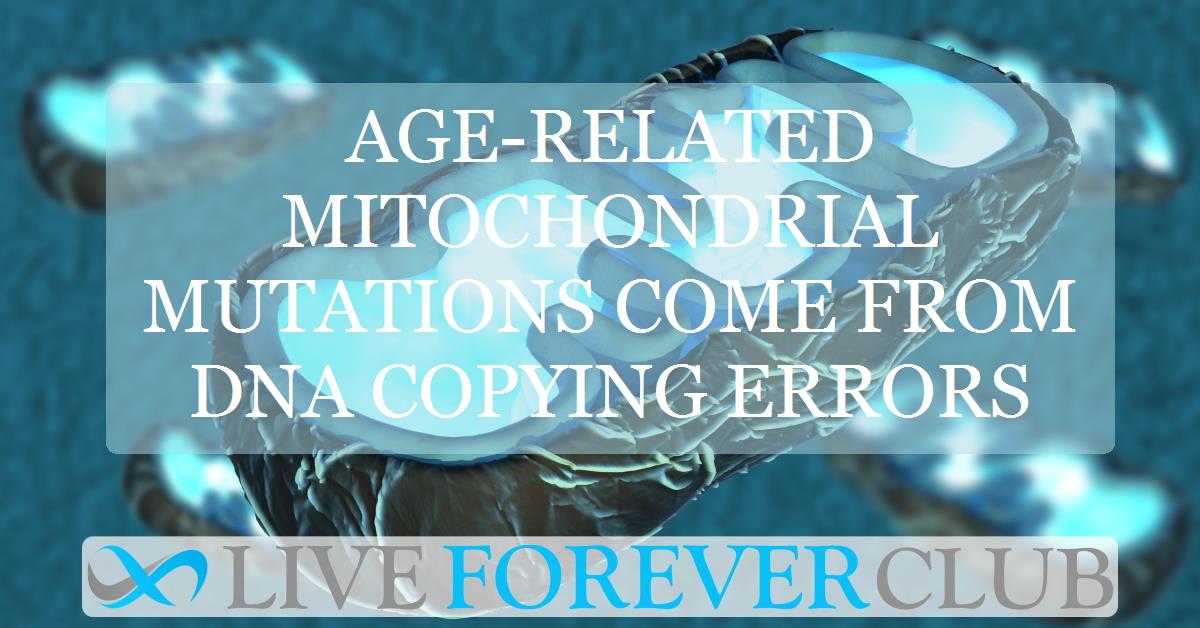We often think of ageing as wrinkles, grey hair, or aching joints. But the real signs lie deep inside, within our cells, our DNA, and our mitochondria. These tiny powerhouses keep our cells running. Yet over time, even they show the wear and tear of age.
A recent paper titled “Mechanism of age-related accumulation of mitochondrial DNA mutations in human blood” uncovers a fascinating truth. It reveals how silent changes in mitochondrial DNA (mtDNA) build up as we age, not because of external stress but due to errors during replication and a process called clonal hematopoiesis.
With over 750,000 human genomes studied, the findings link three powerful forces: cryptic mitochondrial mutations, the rise of blood cell clones, and inherited nuclear variants. Together, they tell a quiet but powerful story of cellular ageing that unfolds beneath the surface.
The Basics: What Is Mitochondrial Heteroplasmy?
Mitochondria carry their own DNA, separate from the main genome. Over time, mutations creep into this mitochondrial DNA. When a cell carries both normal and mutated mtDNA, it is said to show heteroplasmy. This isn't unusual. Scientists have found low-level heteroplasmic mutations in nearly everyone.
But the puzzle is this: why do some of these mutations increase with age, especially in blood? Prior theories blamed oxidative stress from reactive oxygen species. That damage, once thought to trigger a vicious cycle of more mutations and cell dysfunction, does not fully explain the pattern researchers now observe.
The study’s authors write, “Here we investigate the mechanism underlying this phenomenon by calling mtDNA sequence, abundance, and heteroplasmic variation in human blood using whole genome sequences from ~750,000 individuals.” Their massive dataset comes from the UK Biobank and the All of Us cohort, offering a global view of ageing at the molecular level.
The Real Culprit: Replication Errors and Clonal Expansion
What the team discovered turns old assumptions upside down. Rather than oxidative damage, the main force behind age-related mtDNA mutations is simple replication error. Mitochondria copy their own DNA thousands of times in every cell. Each round of copying creates a chance for error, small, silent mutations that go unnoticed for decades.
The real turning point happens when a single blood cell with these cryptic mutations begins to divide rapidly. This process is called clonal hematopoiesis (CH). As that one cell multiplies, its mtDNA mutations are carried into every daughter cell. Suddenly, what was once undetectable becomes visible across the bloodstream.
In the paper, the authors explain, “We propose that the high copy number and high mutation rate of mtDNA make it a particularly sensitive blood-based marker of CH.” This simple two-step model, error followed by expansion, explains why mtDNA mutations seem to surge later in life.
Strand Bias: A Molecular Signature of Ageing
The researchers looked closer at which mutations increase with age. They found a clear signature: transitions like C>T and A>G, especially on the heavy strand of mtDNA. These mutation types fit a well-known model of mtDNA replication where the heavy strand is left exposed and vulnerable during copying.
“Only heavy strand C>T mutations and A>G mutations on both strands accumulated with age,” they write. This pattern was consistent across two major datasets, regardless of smoking or other lifestyle factors.
Surprisingly, mutations caused by oxidative damage, such as C>A or A>C changes, were rare and did not show age-related accumulation. This finding weakens the old theory that oxidative stress is the primary cause of mitochondrial ageing in blood.
Instead, the results point to deamination during DNA replication as the main source of mutation. This is a subtle, internal process that unfolds over decades, far removed from environmental exposure.
Why These Mutations Don’t Usually Cause Harm
Even though these mutations accumulate, most of them don't affect the body. That is because they stay at low heteroplasmy levels, meaning only a small fraction of a person’s mitochondria carry the change. At these levels, they usually don’t interfere with cellular function.
The team explored this using a genetic measure called dN/dS, which compares the rate of protein-changing (nonsynonymous) to silent (synonymous) mutations. A ratio near 1 suggests neutrality. Less than 1 indicates purifying selection, which removes harmful changes.
They write, “We find that dN/dS among age-accumulating variants is closest to neutral expectation at low heteroplasmy and falls as heteroplasmy rises.” This suggests that when these mutations stay low, the body doesn't ‘notice’ them. Only when they rise do cells start to act against them.
So, for most people, these age-linked mutations are harmless passengers. They don’t cause disease. They are just along for the ride.
The Link Between mtDNA Mutations and Blood Cancer Risk
Here’s where it gets more serious. The team also found that people with more mtDNA mutations in their blood were at higher risk of hematologic cancers. This connection wasn’t random. It was especially strong in conditions like leukemia and myelodysplastic syndrome.
What’s driving this link? Again, it’s CH. When a mutated blood stem cell multiplies rapidly, it not only spreads mtDNA mutations but also increases cancer risk. In other words, the same process that makes these mutations detectable also raises the chances of cancer.
“We found a strong association between heteroplasmic SNV burden and hematologic cancer,” the authors write. They also note weaker links to kidney disease and no associations with lung cancer after adjusting for smoking.
This opens the door to new diagnostics. Tracking mtDNA mutations in blood could one day help detect early signs of clonal expansions, even before symptoms appear.
Inherited Variants Can Raise the Risk
Digging deeper, the team looked at nuclear DNA to find inherited variants that might predispose people to these changes. They found strong associations with well-known CH genes, including TERT, TCL1A, and SMC4.
These genes regulate cell division, DNA repair, and blood stem cell function. If you inherit variants near them, you might be more likely to develop CH and, as a result, accumulate more mtDNA mutations in blood.
They explain, “Across virtually all variants associated with CH at genome-wide significance, we observed a positive correlation with corresponding effect sizes for mtDNA SNV burden.” This means the same genetic roots that promote CH also promote the rise of mtDNA mutations.
So your DNA doesn’t just shape your eyes or hair. It also sets the pace for how your blood cells mutate and change with age.
Beyond Blood: Do Other Tissues Show This Too?
While this study focused on blood, it raises a fascinating question. Does the same process happen elsewhere? The answer is, probably yes.
In tissues like colon and muscle, researchers have seen age-related accumulation of mitochondrial mutations. Some of these tissues divide, while others, like muscle, do not. Still, patterns of clonal expansion have been observed in both.
“Interestingly,” the authors write, “accumulation of somatic mtDNA mutations has also been reported in non-dividing tissues such as skeletal muscle.” This suggests that the two-step model, mutation plus clonal expansion, might be more widespread than we thought.
Future research may use single-cell sequencing to explore this further. For now, blood remains our clearest window into the hidden clockwork of mitochondrial ageing.
The Bigger Picture: Mitochondria as a Marker of Time
This study does more than identify how mutations build up. It proposes a new framework for how we understand biological ageing, one that connects silent DNA errors, clonal cell growth, and inherited traits.
By viewing mtDNA mutations not as causes but as markers, scientists can track cellular ageing with surprising accuracy. These signals could help predict disease, personalise treatments, or one day even guide anti-ageing therapies.
As the authors conclude, “Observed mtDNA SNV burden is likely more akin to a passenger mutation count than binary CH status.” That single line reframes the way we see age-related change, not as a breakdown but as a hidden narrative waiting to be read.
In the end, your blood doesn’t just carry oxygen. It carries the story of time itself, written in the quiet language of mitochondrial DNA.
The study is published in the journal bioRxiv. It was led by Rahul Gupta from Massachusetts General Hospital.






